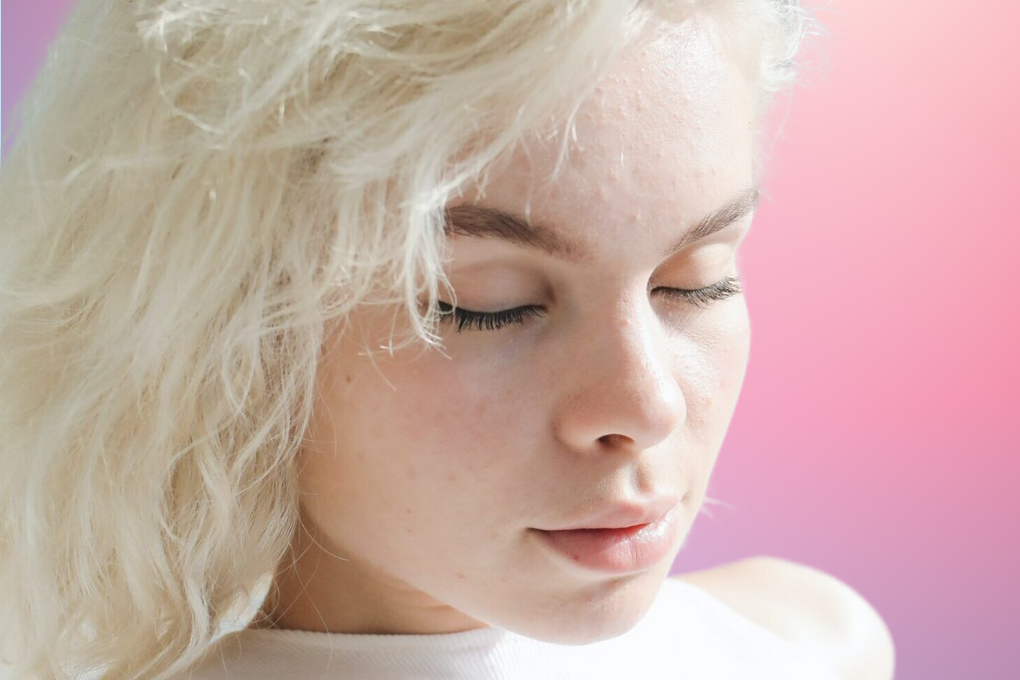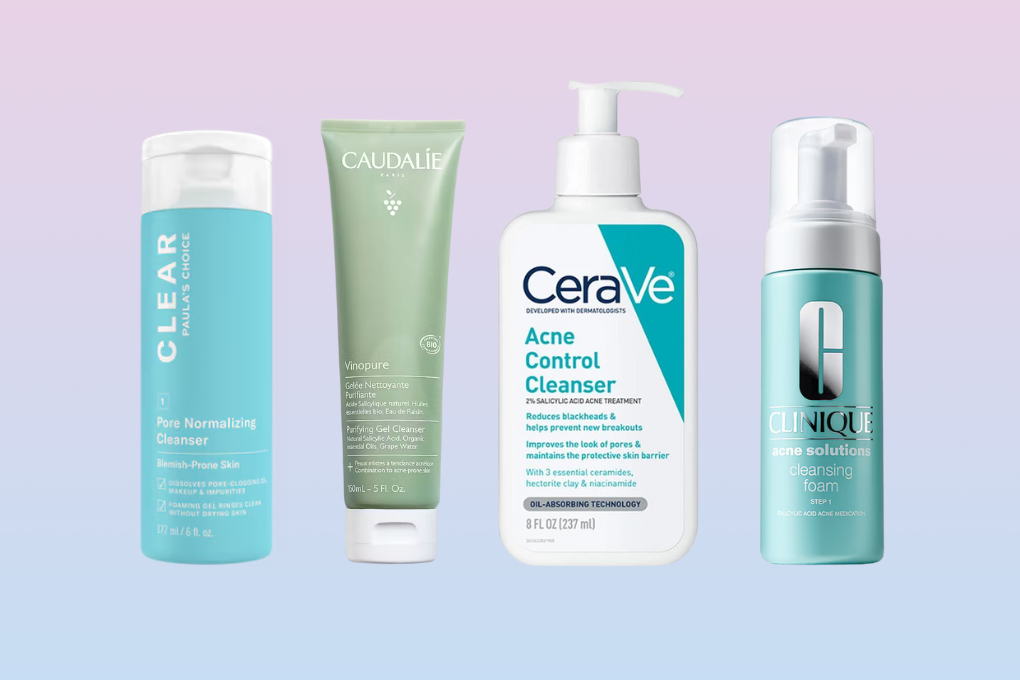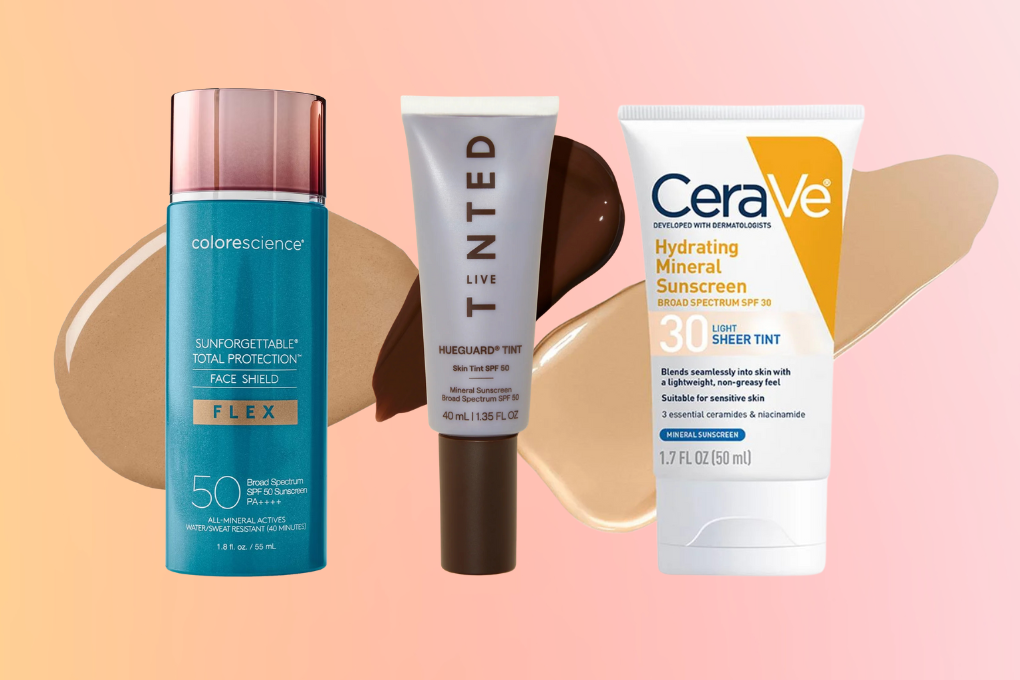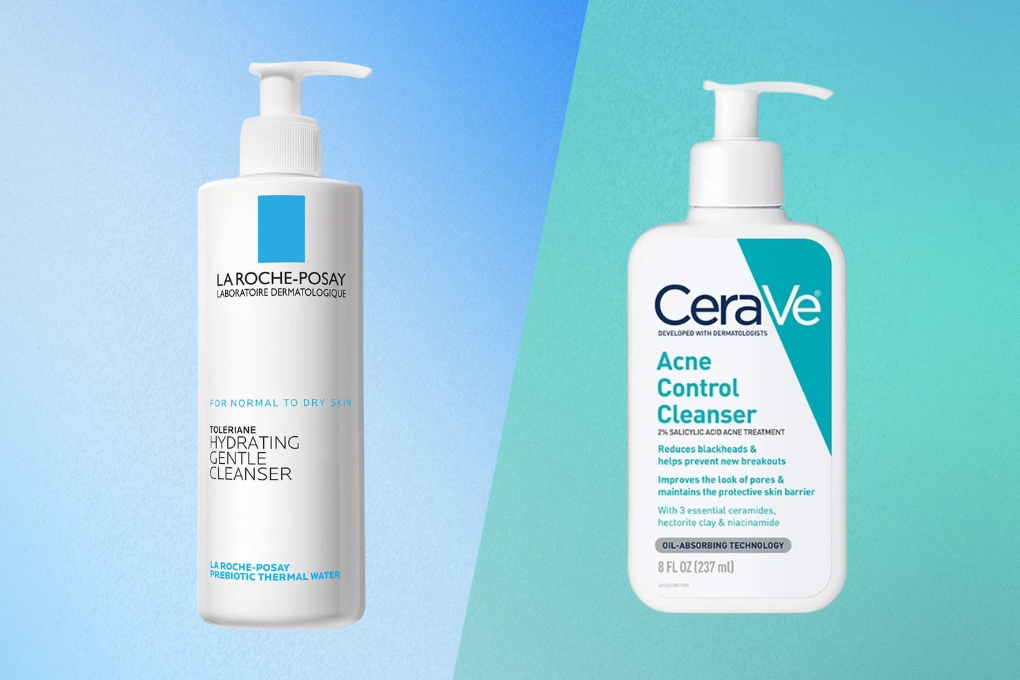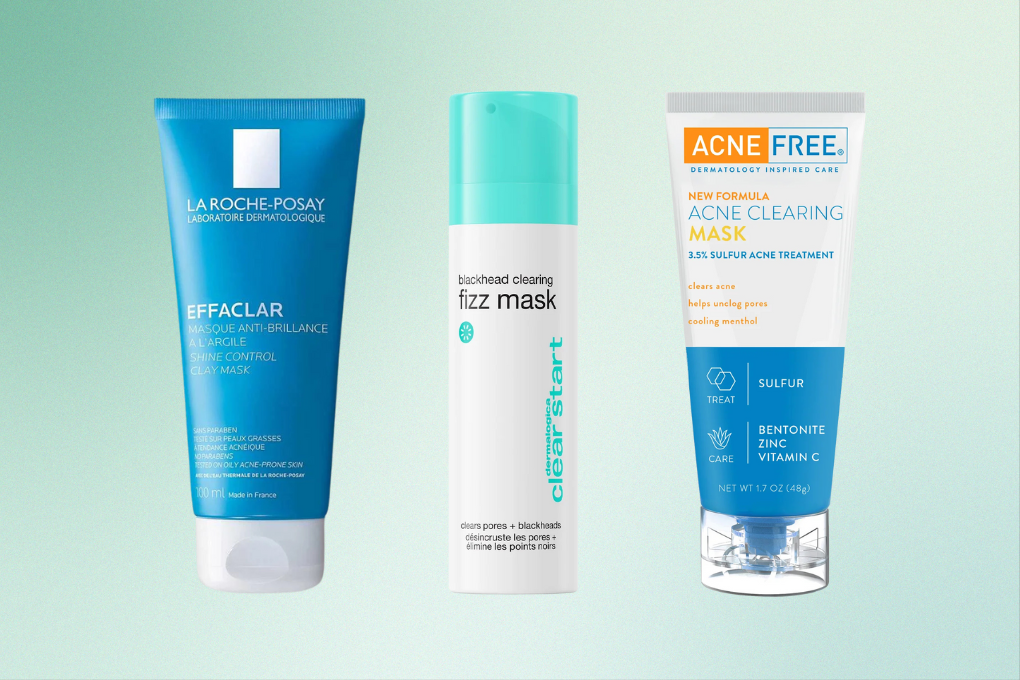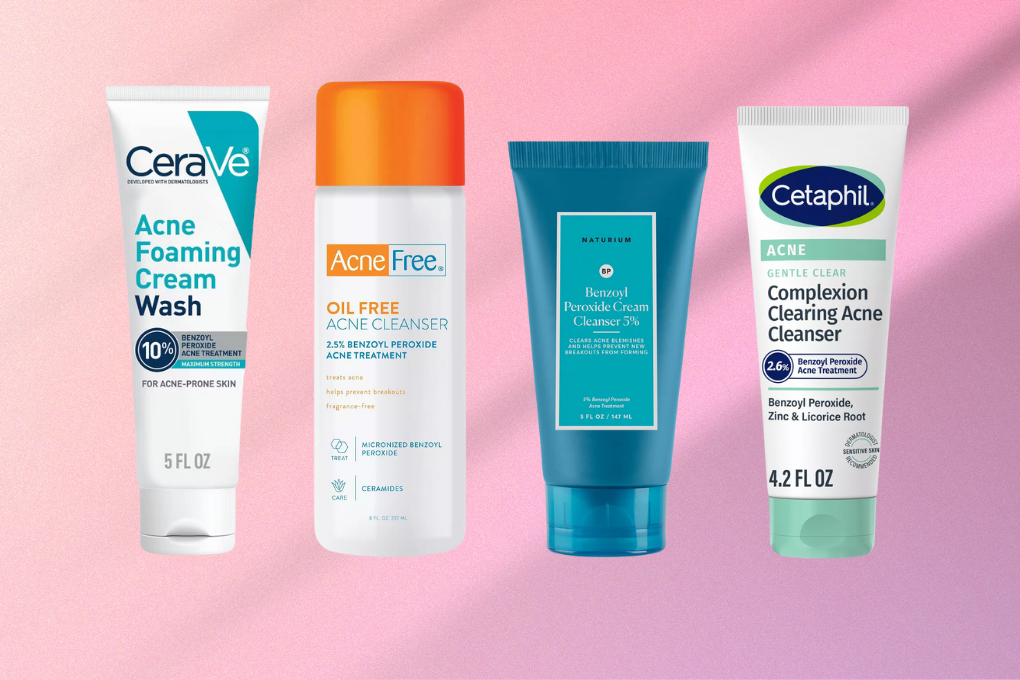When you have acne-prone skin, it can feel like you are constantly discovering different types of bumps and textures on your face. From closed comedones to papules to cysts, there are many ways that our skin demonstrates its displeasure at clogged pores.
If you’ve ever felt small, gritty, non-inflamed bumps on your skin that might poke through with the appearance of a grain of sand, you’ve probably encountered sebum plugs.
What Is a Sebum Plug?
Sebum is a natural, oily substance produced by sebaceous glands beneath the skin’s surface. Its primary function is to lubricate our skin, protecting it from dehydration and other environmental stressors.
While sebum does keep our skin soft, supple, and moisturized, sometimes it can be a little too much. While sebum should flow freely from the sebaceous gland in your pore to the surface of your skin, sebum and dead skin cells can become trapped inside a pore and form a blockage (imagine a small cork) known as a sebum plug.
Most noticeable on oil-prone zones like your nose, forehead, and chin, sebum plugs don’t have a distinct color but might feel like a slight bump or texture with a slightly grainy or gritty sensation when you run your fingers over your skin, especially during cleansing. Left unchecked, these pores clogged with hard sebum can be a precursor to other types of acne lesions, including open comedones (blackheads) and closed comedones (whiteheads).
How to Get Rid of Sebum Plugs?
A proper skincare routine, which includes regular cleansing, exfoliation, and moisturizing, can help balance your sebum production and minimize the occurrence of pores clogged with hard sebum. Gentle and consistent skincare practices are more likely to yield positive results in reducing sebum plugs than anything short-term and drastic. Consider adding the following steps to your skincare routine:
Double Cleansing
A two-step cleansing method can be helpful to dislodge sebum plugs. Start with massaging a cleansing balm or oil onto your dry skin to dissolve sebum and makeup before rinsing. Sometimes, if you continue to massage your oil cleanser for a few minutes, you might experience sebum plugs coming out and feeling like “grits” under your fingers.
TULA Skin Care #Nomakeup Replenishing Cleansing Oil with Rice Bran Oil and Ceramides
The Replenishing Cleansing Oil by Tula is a lightweight oil cleanser that works quickly to dissolve makeup and debris when applied to dry skin before rinsing away. It contains the brand's signature probiotic extracts that calm the skin while you cleanse. Rice bran oil and ceramides nourish and help the skin retain moisture. It also uses arctic winged kelp to soothe, but you should avoid this product if you have a sensitivity to kelp.
- Probiotics to calm skin
- Ceramides and rice bran oil soothe and moisturize
- Expensive
- Kelp can be irritating for some people
Follow with a gentle foaming cleanser to thoroughly cleanse and remove any remaining oil or impurities:
Bioderma Sensibio Soothing Micellar Cleansing and Makeup Removing Foaming Gel for Sensitive Skin
This cleansing gel from French brand Bioderma's Sensibio line for sensitive skin uses micellar technology to gently cleanse and remove makeup. These cleansing microdroplets, or micelles, can capture oil and impurities without stripping, making this cleanser an excellent option for anyone with sensitive skin. It also uses Bioderma's patented D.A.F. complex, which works on all skin types to help improve the skin's tolerance threshold.
- Micelles gently cleanse and remove makeup
- Non-stripping for sensitive skin
- D.A.F. complex to increase skin tolerance
- More expensive than other options
Exfoliation
Adding salicylic acid to your skincare regimen can help with sebum plugs. As a beta-hydroxy acid (BHA), salicylic acid penetrates the oil in the pores and facilitates the removal of dead skin cells and excess sebum. Using salicylic acid liquid exfoliant two to three times a week, or a salicylic cleanser, can prevent pore blockages.
Paula's Choice CLEAR Pore Normalizing Cleanser Acne Face Wash with 0.5% Salicylic Acid
This gentle salicylic acid cleanser from Paula's Choice helps dissolve pore-clogging oil and debris without irritating sensitive skin. A low strength of 0.5% salicylic acid in a gel texture will refresh your skin and clear your pores, while glycerin, arginine, and panthenol help soothe and hydrate. With this formula you can enjoy the benefits of salicylic acid without flaking or dryness.
- Lower strength 0.5% salicylic acid
- Good choice for sensitive skin
- Also comes in a refill pouch
- May not be strong enough for some skin types
La Roche-Posay Effaclar Medicated Gel Cleanser with 2% Salicylic Acid and LHA
La Roche-Posay's gel cleanser is our top choice for oily skin types because it thoroughly cleanses and dissolves oil with 2% salicylic acid. It was even tested to reduce excess surface oil by up to 47%, so it can help keep skin less oily during the day. It also contains lipo-hydroxy acid (LHA), which has exfoliating and skin renewing properties, and glycerin to help the skin retain moisture.
- Full strength 2% salicylic acid
- Added LHA to help exfoliate
- May be strong for sensitive skin
Paulas Choice Skin Perfecting BHA Liquid Exfoliant with 2% Salicylic Acid
Paula's Choice 2% BHA Liquid Exfoliant is a fan favorite for good reason. This lightweight toner refreshes skin and uses 2% strength of salicylic acid to exfoliate and clear pores. It has an optimal pH, which is important for exfoliants to get maximum effectiveness without irritation, and it contains soothing green tea to support the skin’s barrier. But watch out because this gentle formula is still strong, so remember to ease into use.
- Optimal pH for acid
- Green tea to soothe and support skin barrier
- Expensive
- Too strong for some skin types
Retinoids
Retinoids are derivatives of vitamin A that accelerate your skin’s natural cell turnover process, helping clear pores and reduce sebum plugs. Whether it’s an over-the-counter adapalene gel or prescription-strength tretinoin, make sure to introduce it slowly to avoid irritation.
If you use retinoids, wearing sunscreen is a must due to your skin’s increased photosensitivity.
La Roche-Posay Effaclar Adapalene Gel 0.1% Treatment
From La Roche-Posay's Effaclar line, which is designed for acne-prone skin, comes their adapalene 0.1% treatment gel. Adapalene is a prescription-strength retinoid available over the counter in the U.S. in 0.1% strength. It works by increasing cell turnover to help prevent acne and can be used to treat blackheads, whiteheads, clogged pores, pimples, and even KP bumps on the arms. La Roche-Posay's version comes in an effective fragrance-free gel that you apply in a thin layer to your face or body once a day.
- Maximum over-the-counter strength
- Non-greasy gel-like texture
- HSA and FSA eligible
- Expensive
The Ordinary Retinal 0.2% Emulsion High-Strength Stabilized Retinaldehyde Serum
The Ordinary has many different retinoid products to choose from, but their Retinal 0.2% Emulsion is their highest strength formula. While primarily advertised for aging, the retinaldehyde in this product is a one-step away from prescription tretinoin (the active form of vitamin A), making it a great retinoid entry point for acne-prone skin. This serum-textured formula will increase cell turnover, helping to remove dead cells that can clog pores.
- Retinaldehyde is a strong over-the-counter retinoid
- Airless pump to protect formula
- Light creamy serum texture
- Small amount
- Yellow hue can rub off on light fabrics
Lightweight Hydration
Look for a non-comedogenic lightweight moisturizer or gel moisturizer and hydrating products that will support your skin’s barrier without further clogging your pores.
The Ordinary Natural Moisturizing Factors + Beta Glucan Lightweight Gel Moisturizer
Natural Moisturizing Factors + Beta Glucan from The Ordinary is their lightweight gel moisturizer. This clear, oil-free formula immediately refreshes and hydrates your skin and includes the brand's natural moisturizing factors, which include amino acids, urea, and PCA to mimic compounds in the skin's moisture barrier. Along with beta-glucan to hydrate and ceramides for barrier support, this moisturizer will protect your skin from water loss while staying lightweight.
- Great value for larger size
- Natural moisturizing factors, beta glucan, and ceramides fortify skin barrier
- May not be moisturizing enough for some skin types
La Roche-Posay Toleriane Sensitive Fluide Lightweight Protective Moisturizer with Niacinamide
The Toleriane Sensitive Fluide is an oil-free moisturizer from La Roche-Posay's sensitive skin line. What makes it unique is its limited number of ingredients, which can help you avoid irritation if you have sensitive skin. Made with La Roche-Posay thermal spring water, niacinamide, and glycerin, it can hydrate your skin for up to 48 hours and also helps to support your moisture barrier. It is lightweight and moisturizing with a mattifying texture, making it a great option if you have skin that is both sensitive and acne-prone.
- Lightweight with mattifying texture
- Thermal water, niacinamide, and glycerin to hydrate and soothe
- Expensive
- Niacinamide can be irritating for some skin types
EltaMD Skin Recovery Lightweight Moisturizer for Damaged Skin Barrier with Amino Acids
Elta MD's Skin Recovery Light Moisturizer is a weightless lotion designed with acne-prone and sensitive skin in mind. It uses the brand's patented AAComplex of amino acids to restore the skin's natural barrier, which makes it one of our favorite moisturizers to use alongside a strong acne treatment. With hyaluronic acid, glycerin, squalane, and coconut extract, this lotion soothes and moisturizes dehydrated skin while calming irritation and redness.
- Lightweight with hydrating ingredients
- AAComplex restores skin barrier
- Great option when using harsh acne treatments
- Expensive
Professional Interventions
Before starting any new skincare routine or product, especially for persistent or concerning skin issues, you should always consult a dermatologist. If you need more immediate results or have persistent sebum plugs, you can consider professional extractions by a licensed esthetician or dermatologist. Picking at your skin yourself could put you at risk for scarring, and these experts have the tools and knowledge for safe extraction.
While small, sebum plugs are at the root of other types of acne, and dealing with them promptly can prevent further acne complications. They may have a pore reputation, but with consistent care, you can remove sebum plugs and prevent them from coming back.





